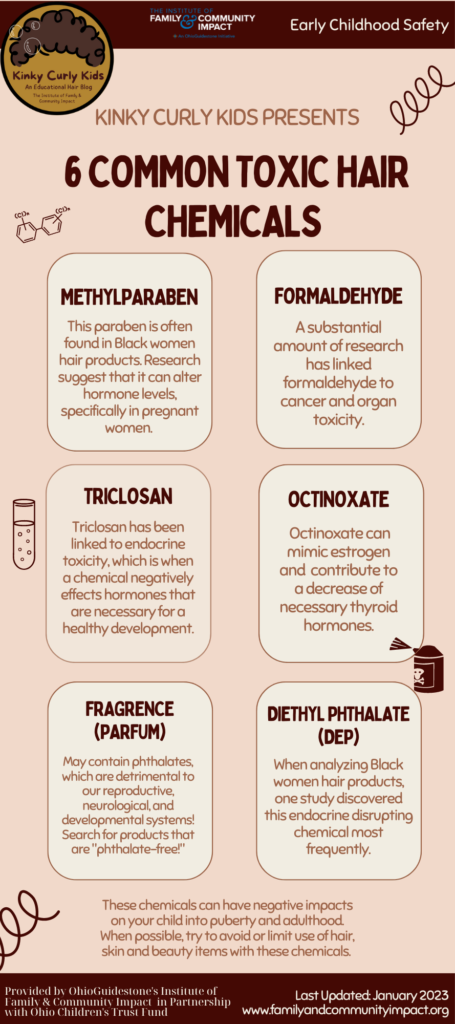Ways to Limit Exposure to Endocrine Disrupting Chemicals (EDCs)
Blog Author: Raven Lipford, Research Analyst and Early Childhood Safety Initiative Project Lead.
Empowering Families and Communities through the Early Childhood Safety Initiative:
The Institute of Family and Community Impact, an OhioGuidestone initiative strives to create a society where children are resilient, with limited adverse childhood experiences (ACEs) and increased benevolent experiences. Through our Early Childhood Safety Initiative (ECSI), which is carried out in partnership with Ohio Children’s Trust Fund we are committed to improving early childhood safety. Positive adult connections are essential to building benevolent childhood experiences, and parents are better equipped to build them when they have the resources they need.
The Early Childhood Safety Initiative’s Kinky Curly Kids blog is here to help families by addressing the presence of neuroendocrine disrupting chemicals in Kinky Curly Kids products. In today’s short blog post, we will explore means of limiting exposure to endocrine disrupting chemicals (EDCs). You can find additional tips and information on the Silent Spring Institute’s Website. The Silent Spring Institute is an esteemed research center committed to environmental and women’s health.

Ways to Limit EDC Exposure:
- Read labels with care.
When it comes to identifying chemicals of concern in your products, the label can be a great starting point. While not every harmful ingredient may be listed, you do want to avoid products that list any of the ingredients below to the best of your ability:
- Siloxane
- Cyclomethicone
- Benzophenone
- Octinoxate
- Octyl methoxycinnamate
- Oxybenzone
- Diethanolamine or DEA
- Parabens
- Fragrance or parfum
- Triclosan
By being mindful of these ingredients, you can make informed decisions about the products you use and help reduce you and your family’s exposure to harmful chemicals. Products that include the phrases “phthalate-free” and “paraben-free” can be a great place to start when looking to replace your products with non-toxic ones!
- Choose products made from plants, not petroleum when you can.
It’s important to be aware that hair products can contain several chemicals that disrupt hormones, such as parabens, phthalates, and cyclosiloxane. To avoid any potential health risks, consider using products that primarily list plants in the list of ingredients.
We at the Institute understand it may be difficult to keep track of all of the neuroendocrine disrupting chemicals that you should try to avoid. This is why the Kinky Curly Kids blog provides a free chemical sheet below. Silent Spring has also developed a free mobile app, Detox Me that provides tips and tricks on reducing exposure to harmful chemicals in personal care products and more!
For more information on practices to limit childhood exposure to endocrine disrupting chemicals please visit the article website here!
Kinky Curly Kids Toxic Chemical Sheet:

6 toxic hair chemicals commonly found in products marketed toward kinky curly kids!



